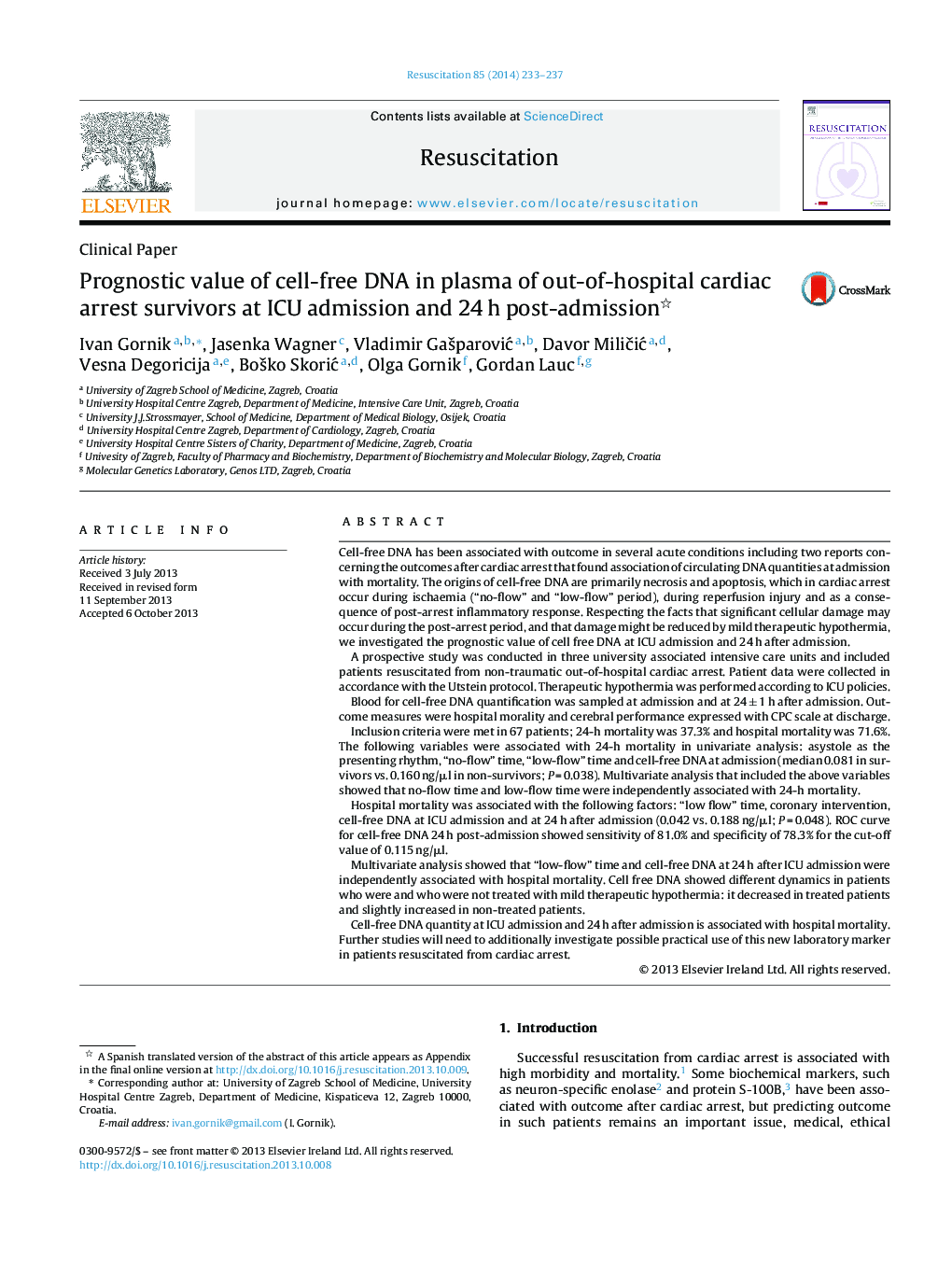| Article ID | Journal | Published Year | Pages | File Type |
|---|---|---|---|---|
| 3008402 | Resuscitation | 2014 | 5 Pages |
Cell-free DNA has been associated with outcome in several acute conditions including two reports concerning the outcomes after cardiac arrest that found association of circulating DNA quantities at admission with mortality. The origins of cell-free DNA are primarily necrosis and apoptosis, which in cardiac arrest occur during ischaemia (“no-flow” and “low-flow” period), during reperfusion injury and as a consequence of post-arrest inflammatory response. Respecting the facts that significant cellular damage may occur during the post-arrest period, and that damage might be reduced by mild therapeutic hypothermia, we investigated the prognostic value of cell free DNA at ICU admission and 24 h after admission.A prospective study was conducted in three university associated intensive care units and included patients resuscitated from non-traumatic out-of-hospital cardiac arrest. Patient data were collected in accordance with the Utstein protocol. Therapeutic hypothermia was performed according to ICU policies.Blood for cell-free DNA quantification was sampled at admission and at 24 ± 1 h after admission. Outcome measures were hospital morality and cerebral performance expressed with CPC scale at discharge.Inclusion criteria were met in 67 patients; 24-h mortality was 37.3% and hospital mortality was 71.6%. The following variables were associated with 24-h mortality in univariate analysis: asystole as the presenting rhythm, “no-flow” time, “low-flow” time and cell-free DNA at admission (median 0.081 in survivors vs. 0.160 ng/μl in non-survivors; P = 0.038). Multivariate analysis that included the above variables showed that no-flow time and low-flow time were independently associated with 24-h mortality.Hospital mortality was associated with the following factors: “low flow” time, coronary intervention, cell-free DNA at ICU admission and at 24 h after admission (0.042 vs. 0.188 ng/μl; P = 0.048). ROC curve for cell-free DNA 24 h post-admission showed sensitivity of 81.0% and specificity of 78.3% for the cut-off value of 0.115 ng/μl.Multivariate analysis showed that “low-flow” time and cell-free DNA at 24 h after ICU admission were independently associated with hospital mortality. Cell free DNA showed different dynamics in patients who were and who were not treated with mild therapeutic hypothermia: it decreased in treated patients and slightly increased in non-treated patients.Cell-free DNA quantity at ICU admission and 24 h after admission is associated with hospital mortality. Further studies will need to additionally investigate possible practical use of this new laboratory marker in patients resuscitated from cardiac arrest.
